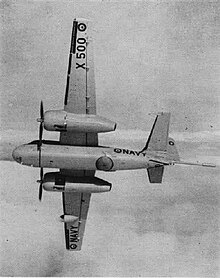
This is a list of aircraft of the Royal Canadian Navy covering the period until 1968 when all aircraft operations were transferred to the newly unified Canadian Armed Forces, originally with Maritime Command and since 1975 with Air Command, which has subsequently been renamed as the Royal Canadian Air Force (RCAF).
Contents
Prior to World War II (WWII) the Royal Canadian Navy (RCN) did not operate aircraft. During World War I, the Royal Navy Canadian Air Service, a component of the Royal Naval Air Service, used seaplanes to carry out anti-submarine patrols off the Canadian East Coast. After the United States entered the war, the United States Navy established two seaplane bases in Nova Scotia for similar patrols, and the Royal Canadian Naval Air Service (RCNAS) was formed to assume responsibility for these flights; however, the war ended before the RCNAS was ready to operate independently, so it was disbanded and the two bases were deactivated and handed over to the Air Board.
During WWII, Canadian personnel manned the carriers HMS Nabob (from 1943 until torpedoed in 1944) and HMS Puncher (from 1944 until returned to the US in 1946), with their complement of Royal Navy Fleet Air Arm (FAA) carrier based aircraft. Canadian naval aviators including pilots of the RCN Volunteer Reserve also served in the FAA aboard carriers of the Royal Navy Pacific Fleet.
With the loan of HMCS Warrior in 1946, the RCN received its first aircraft, operating Fairey Firefly fighter-bombers and Supermarine Seafire fighters loaned from the Royal Navy. When both aircraft and the ship failed to meet Canadian requirements, HMCS Magnificent was purchased in 1948, along with Hawker Sea Fury fighters and in 1950, Grumman Avenger torpedo bombers.
From then until 1968, the RCN operated a variety of fixed wing and rotary wing aircraft. After the Canadian Forces sold off HMCS Bonaventure in 1970, Canadian naval vessels operated only Sea King helicopters. The Trackers were transferred to land bases to perform coastal patrols, while the Sikorsky HO4S plane-guard helicopters were retired, and other types still in service were allocated as per their RCAF equivalents.
Aircraft that remained in service after unification are highlighted in blue.